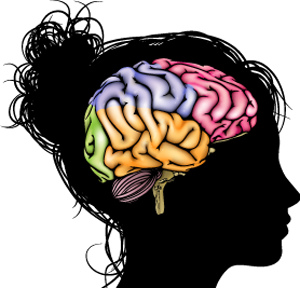The brain takes longer to develop and mature than any other organ in the body. Beginning in the third week of gestation and extending into the mid-20s, an ongoing interplay of genetic and environmental factors results in the mature human brain, a structure composed of more than 100 billion neurons. Some of the most rapid and pronounced changes in the brain take place during childhood and adolescence.
During normal adolescent brain development, widespread structural and functional changes occur rapidly within individual brain regions and in the connections between them. These changes help the brain systems that regulate cognitive, emotional, and social behavior to mature. The extent and complexity of these changes make the adolescent brain particularly vulnerable to the adverse effects of alcohol. Indeed, studies have associated heavy alcohol use during adolescence with harm to various brain structures, lingering problems with cognitive functions such as attention and memory, and an increased risk for future alcohol use disorder (AUD) and other mental health disorders.
“We have long known that adolescent alcohol use is associated with many adverse outcomes, both during adolescence and in later life,” says George F. Koob, Ph.D., Director, National Institute on Alcohol Abuse and Alcoholism (NIAAA). “Our expanding research investment in this area is allowing us to define more precisely why alcohol and the adolescent brain are a particularly dangerous combination.”
The brain is a highly complex organ. Human brain imaging studies have shown that, over the course of adolescence, the volume of gray matter—which represents the cell bodies of neurons and their connections with nearby neurons—decreases in the prefrontal cortex. This decrease likely reflects the normal process of “synaptic pruning,” through which the brain gets rid of excess connections that are no longer needed. However, the volume of white matter—which is important for pathways connecting neurons located at farther distances from each other—increases during adolescence, presumably reflecting enhanced brain connectivity and improved communication between areas. Initial findings from NIAAA-supported research indicate that adolescents who drink heavily, when compared with nondrinking adolescents, have accelerated reductions in gray matter and smaller increases in white matter.
To build on these findings, NIAAA supports the National Consortium on Alcohol and Neurodevelopment in Adolescence (NCANDA), a nationally representative, accelerated, longitudinal study of more than 800 youth. NCANDA’s accelerated design allows researchers to follow multiple youth cohorts, each starting at a different age, so that the cohorts together span a broader age range of interest than a traditional cohort design. The goals of the NCANDA study are to determine the short- and long-term effects of alcohol use on the developing adolescent brain and identify brain characteristics that predict AUD.
NIAAA, along with the National Institute on Drug Abuse, is a major contributor to the National Institutes of Health Adolescent Brain Cognitive Development (ABCD) Study, a 10-year longitudinal study of 10,000 youth, the largest long-term study of brain development and child health in the United States. NCANDA and ABCD investigators are providing much-needed information about the neurodevelopmental consequences of alcohol and other drugs, alone and in combination.
A recent NCANDA study led by Adolf Pfefferbaum, M.D., of SRI International in Menlo Park, California, and colleagues found disordered brain growth trajectories among young people who initiated drinking during adolescence. The researchers noted possible factors that contribute to the abnormal trajectories include peak alcohol consumption in the past year and having a family history of AUD.
Another recent NCANDA investigation led by Eva Müller-Oehring, Ph.D., also of SRI International, and colleagues found that development of intrinsic functional networks (IFNs)—brain circuits that underlie specific functions—were susceptible to adolescent alcohol use. In particular, they reported evidence that IFNs associated with cognitive and emotional functioning become rewired among adolescents who exceeded the study’s criteria for no or low alcohol use. This effect, they conclude, may impede maturation of complex social and emotional behaviors.
The growing evidence of alcohol’s impact on adolescent brain development, as well as its position as the substance of choice for young people, underscores the need for health professionals to screen adolescents for alcohol.
A 2016 study funded by NIAAA demonstrated that a single screening question about drinking frequency in the past year could help doctors identify adolescents at risk for alcohol problems. The study supported the use of the age-based screening thresholds put forward in NIAAA’s Alcohol Screening and Brief Intervention for Youth: A Practitioner’s Guide and demonstrated that simple screening tools, such as those in NIAAA’s Youth Guide, are efficient and effective.
References:
Pfefferbaum, A.; Kwon, D.; Brumback, T.; Thompson, W.K.; Cummins, K.; Tapert, S.F.; Brown, S.A.; Colrain, I.M.; Baker, F.C.; Prouty, D.; De Bellis, M.D.; Clark, D.B.; Nagel, B.J.; Chu, W.; Park, S.H.; Pohl, K.M.; and Sullivan, E.V. Altered brain developmental trajectories in adolescents after initiating drinking. American Journal of Psychiatry 175(4):370–380, 2018. PMID: 29084454
Müller-Oehring, E.M.; Kwon, D.; Nagel, B.J.; Sullivan, E.V.; Chu, W.; Rohlfing, T.; Prouty, D.; Nichols, B.N.; Poline, J.B.; Tapert, S.F.; Brown, S.A.; Cummins, K.; Brumback, T.; Colrain, I.M.; Baker, F.C.; De Bellis, M.D.; Voyvodic, J.T.; Clark, D.B.; Pfefferbaum, A.; and Pohl, K.M. Influences of age, sex, and moderate alcohol drinking on the intrinsic functional architecture of adolescent brains. Cerebral Cortex 28(3):1049–1063, 2018. PMID: 28168274
Clark, D.B.; Martin, C.S.; Chung, T.; Gordon, A.J.; Fiorentino, L.; Tootell, M.; and Rubio, D.M. Screening for underage drinking and DSM-5 alcohol use disorder in rural primary care practice. Journal of Pediatrics 173:214–220, 2016. PMID: 27059911
